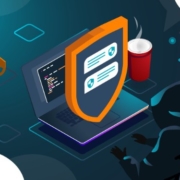Le test de pénétration d’application Web est une méthode pour vérifier la sécurité des applications Web. Découvrez comment cela fonctionne !
C’est également connu sous le nom de test de pénétration d’application web ou de test de sécurité, qui est une évaluation organisée de la sécurité d’une application web pour identifier l’exposition et la faiblesse qui pourraient être exploitées par des acteurs malveillants.
1. Identifying the target application and its environment.
2. Gathering information about the target application.
3. Identifying potential vulnerabilities.
4. Exploiting the identified vulnerabilities.
5. Documenting the results and providing recommendations.
Le test d’intrusion des applications web, également connu sous le nom de test de sécurité ou de test d’intrusion, est une évaluation organisée de la sécurité d’une application web afin d’identifier les expositions et les faiblesses qui pourraient être exploitées par des acteurs malveillants. L’objectif principal du test d’intrusion est d’évaluer de manière proactive la posture de sécurité d’une application web et d’identifier les vulnérabilités potentielles avant que des attaquants ne puissent les exploiter.
Pendant un test d’intrusion d’application web, des professionnels de la sécurité qualifiés, connus sous le nom de testeurs d’intrusion ou de hackers éthiques, simulent divers scénarios d’attaque pour découvrir les failles de sécurité qui pourraient entraîner un accès non autorisé, des violations de données ou d’autres activités malveillantes. Le processus implique les points suivants :
1. Identification de l’application cible et de son environnement.
2. Recueil d’informations sur l’application cible.
3. Identification des vulnérabilités potentielles.
4. Exploitation des vulnérabilités identifiées.
5. Documentation des résultats et fourniture de recommandations.
Le test d’intrusion des applications web est un processus essentiel pour assurer la sécurité des logiciels et des systèmes informatiques. Les tests d’intrusion peuvent être effectués manuellement ou automatiquement à l’aide de logiciels spécialisés. Ces outils peuvent être utilisés pour rechercher des vulnérabilités connues et des failles de sécurité dans les applications web et les systèmes informatiques. Les tests d’intrusion peuvent également être effectués pour vérifier si les applications web respectent les normes et les réglementations en matière de sécurité.
Les tests d








